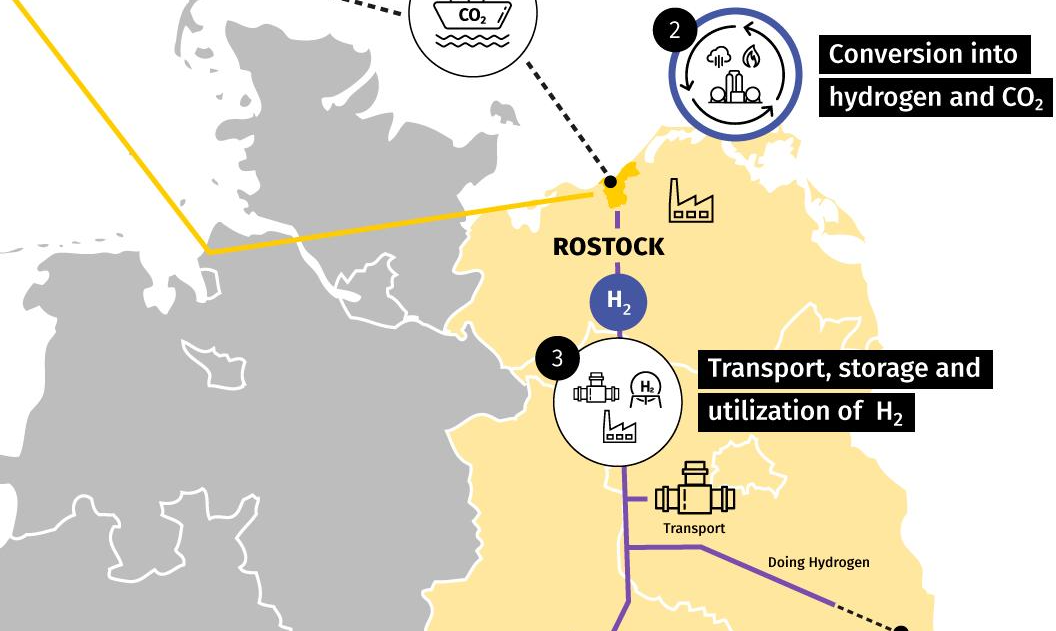Norway/Germany – With regard to low-carbon hydrogen and ammonia, as well as carbon capture, utilization, and offshore CO2 storage, Norwegian Equinor and German VNG AG have decided to expand their current natural gas cooperation (CCU and CCS).
The partners have also decided to establish a collaborative project to assess options for producing low-carbon hydrogen on the Baltic Sea coast, specifically in Rostock, using technologies to capture, use, transport, and safely store CO2 offshore on an industrial scale.
Direct imports of low-carbon hydrogen and ammonia from Norway for the German hydrogen market are part of the agreement. Additionally included are the planning, development, and operation of a gigawatt-scale hydrogen production facility in Rostock with a projected annual capacity of over 230.000 tons of hydrogen, or 8 to 9 TWh, or nearly 20% of the current German hydrogen market.
The agreement also covers the transportation of the liquefied CO2 from Rostock for secure long-term storage offshore Norway.
Doing hydrogen
The IPCEI project “doing hydrogen” will enable the development and repurposing of a 400 km hydrogen pipeline between Rostock, Berlin, and industrial clusters near Leipzig. Eventually, the pipeline will connect to the national hydrogen grid. Additionally, it will allow for the expansion of hydrogen storage in large salt caverns of underground gas storages in Bernburg and Bad Lauchstädt in Saxony-Anhalt, thereby enhancing supply security and flexibility of hydrogen.
The partners concur that the development and expansion of a hydrogen market in Germany will be significantly aided by hydrogen produced from decarbonized natural gas. Opportunities for economic growth are created by Germany’s low-carbon hydrogen production and carbon dioxide management.





